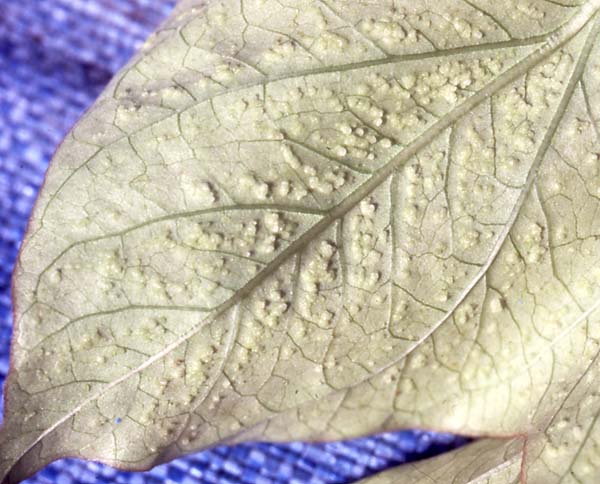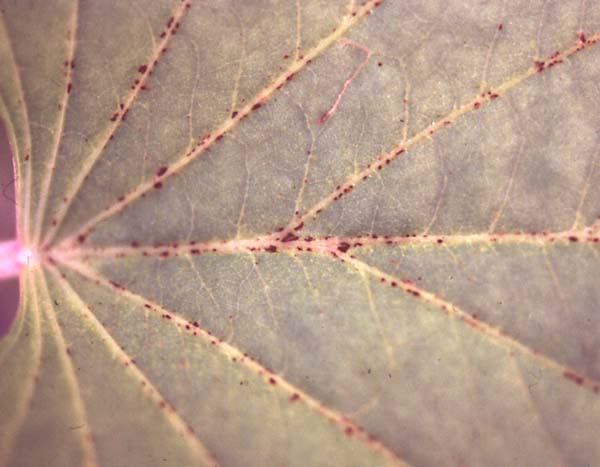|
Intumescence is observed on some cultivars, during warm humid weather.
It is a physiological condition, not caused by any infectious agent, and does
not appear to harm the plant.
Plantlets in tissue culture are particularly susceptible to developing
intumescence. This should not be a cause for concern. It is not an
indication of disease, and plants will grow out normally.
Intumescence is a condition in which numerous small calluses grow on the
surface of the leaves. They may occur on either the upper or lower
surface, and may be scattered over interveinal tissue or clustered along the
main veins. The calluses are less than 2 mm in diameter and about 1 mm
high, and initially have a pale, granular appearance. They appear
simultaneously, and dry up after a few days to much smaller, dark brown granules.
Young mature leaves are most likely to develop intumescence. The higher
humidity of sheltered areas within the canopy will be most conducive, although
light is also necessary.
No control measures are necessary.
Affected plants should not be culled.
Clark, C.A. and Moyer, J.W. 1988. Compendium of sweet potato diseases. APS
Press. 74 p.
Morrow, R.C. and Tibbitts, T.W. 1987. Induction of intumescence
injury on leaf disks. J. Amer. Soc. Hort. Sci. 112, 304-306.
Wetzstein, H.Y. and Frett, J.J. 1984. Light and scanning electron
microscopy of intumescences on tissue-cultured sweet potato leaves.
Contributed
by:
Jane O'Sullivan
|
Characteristics
and occurrence
Symptoms
Management
References

Newly formed calluses on the lower surface of a leaf
(J.
O'Sullivan)

Calluses starting to senesce on the upper surface of a leaf (J.
O'Sullivan).

Calluses, in this case clustered along the
main veins on the upper leaf surface, dry up and turn brown after a few
days.
(J. O'Sullivan). |

